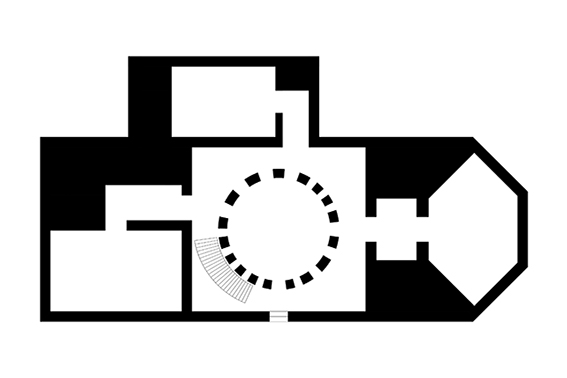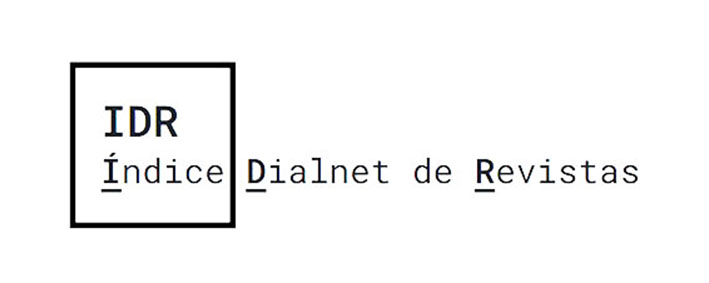La House of One
El espacio sagrado como proceso colaborativo
DOI:
https://doi.org/10.17979/aarc.2024.11.11192Palabras clave:
multi-confesional, arquitectura religiosa, colaboración, práctica espacialResumen
Este artículo explora el potencial de la relación cliente-arquitecto para formar parte de una metodología de diseño conducente a concebir el espacio sagrado como una práctica colaborativa y dialógica. El caso de estudio de esta investigación es el proyecto multiconfesional ‘House of One’ de Kuehn Malvezzi, actualmente en obras en Berlín (Alemania). El cliente de este proyecto no es un clérigo o una comunidad religiosa, sino una fundación iniciada por una congregación local protestante, judía y musulmana. El hecho de que el cliente no sea una entidad homogénea ha determinado la concepción del proyecto y, por consiguiente, el aspecto final del edificio: todas las decisiones de diseño han sido tomadas conjuntamente por los tres clérigos. En este proyecto, la correlación entre las consideraciones teológicas y la realización material se ha reconocido como un proceso bidireccional recíproco: las doctrinas teológicas se materializan a través del espacio construido; del mismo modo, las cuestiones arquitectónicas pueden actuar como catalizador del debate teológico entre los tres clérigos y sus respectivas comunidades.
Descargas
Referencias
Blankinship, Khalid Yahya. 1994. The End of the Jihâd State: The Reign of Hishâm ibn Abd al-Malik and the Collapse of the Umayyads. Albany, New York: State University of New York Press.
Chesnot, Thierry and Georges Malbrunot. 2019. Qatar Papers. Comment l’émirat finance l’islam de France et d’Europe. Neuilly-sur-Seine: Michel Lafon.
Connolly, Kate. 2021. «‘House of One’: Berlin lays First Stone for Multi-Faith Worship Centre», The Guardian, May 27. Accessed 2023/11/29, https://bit.ly/4dXvp00
Crompton, Andrew. 2013. «The architecture of multifaith spaces: God leaves the building». The Journal of Architecture 18(4): 474-496. https://doi.org/10.1080/13602365.2013.821149
Crosbie, Michael J. 2017. «Defining the Sacred». Actas de Arquitectura Religiosa Contemporánea 5: 352–367. https://doi.org/10.17979/aarc.2017.5.0.5163
Evans, Stephen. 2014. «Berlin House of One: The first church-mosque-synagogue?», BBS News Berlin, June 22. Accessed 2023/11/29. https://www.bbc.com/news/magazine-27872551
Foundation House of One. 2021a. «Building the House of One. Donations». Accessed 2023/11/29, https://house-of-one.org/en/donations
Foundation House of One. 2021b. «Building the House of One. Partner Projects". Accessed 2023/11/29. https://house-of-one.org/en/partner-projects
Foundation House of One. 2021c. «Building the House of One. Events". Accessed 2023/11/29. https://house-of-one.org/en/events
Gimpel, Jean. 1983. The Cathedral Builders. New York: Grove Press.
Hoffrath, Christiane. 2018. «Erstes Ablassplakat für den Kölner Dom gefunden». Universität zu Köln. Philosophische Fakultät. Accessed 2023/11/29, https://bit.ly/3Xwy22T
House of One. 2011. «Das Konzept. Die Charta». Accessed 2024/07/09, https://bit.ly/3XCf5M7
House of One. 2012. « Die Architektur. Ausschreibungstext des Architekturwettbewerbs 2012». Accessed 2024/07/09, https://bit.ly/4eeaBAX
Komander, Gerhild H.M. 2004. «Petrikirche, St. Petri», Die Geschichte Berlins, August. Accessed 2023/11/29, https://bit.ly/4ghhfbg
Lachenicht, Susanne. 2019. Religion and Colonization. Oxford Bibliographies. Oxford: Oxford University Press.
Lepri, Paolo. 2014. «A Berlino il primo centro multireligioso del mondo». Corriere della Sera, June 5. Accessed 2023/11/29, https://bit.ly/4gdWGfU
Malvezzi, Kuehn. 2018. «House of One Pavilion on Petriplatz». Divisare, September 18. Accessed 2023/11/29. https://bit.ly/3Tk3Zci
McKnight, Gemma. 2015. «Kuehn Malvezzi’s House of One installation represents a house of prayer for three religions». Dezeen, November 3. Accessed 2023/11/29, https://bit.ly/3ZawAod
Melisch, Claudia M. 2015. «Was wissen wir über die ersten Berliner?». Acta Praehistorica et Archaeologica, 47: 15-23, https://doi.org/10.11588/apa.2015.0.71328
Melisch, Claudia M. 2021. Der Petriplatz in Berlin Mitte, Archäologisch-historische Studien. Berlin: hendirk Bäßler Verlag.
Melisch, Claudia M. and Marina Wesner. 2008. St. Petri Kirche. Ein Rundgang durch das Historische Cölln. Berlin: Berlin Story Verlag.
Pérez Prieto, Victorino. 2011. «Espacios sagrados en el cristianismo y otras religiones. El necesario espacio sagrado interreligioso». Actas de Arquitectura Religiosa Contemporánea 2(2): 92–97. https://doi.org/10.17979/aarc.2011.2.2.5059
Rauhut, Christian, Karin Wagner and Matthias Wemhoff. 2021. «Editorial». In: Der Petriplatz in Berlin-Mitte. Archaeologiscg-historische Studien, Beiträge zur Denkmalpflege in Berlin edited by Claudia M. Melisch, 55. Berlin: Hendrik Bäßler Verlag.
Schmiemann, Brigitte. 2018. «House of One lädt jetzt in seinen Pavillon ein». Berliner Morgenpost, January 30. Accessed 2023/11/29, https://bit.ly/4dPN75f
Stolte, Roland. 2023. «House of One Berlin: Architektur denken-Verständigung leben – ein Zwischenstand unterwegs». In: Beyond Binaries. Religious Diversity in Europe, edited by Joshua Ralston and Klaus von Stosch, 111-136. Paderborn: Brill Schöningh.
Wikipedia contributors. 2023. «Religion in Berlin». Wikipedia, The Free Encyclopedia. Acessed on 2023/11/09, https://en.wikipedia.org/wiki/Religion_in_Berlin.
Wilkinson, Tom. 2016. «Typology: Multifaith». The Architectural Review, April 21. Accessed 2023/11/29, https://bit.ly/3TGYB3h

Descargas
Publicado
Número
Sección
Licencia
Derechos de autor 2024 Actas de Arquitectura Religiosa Contemporánea

Esta obra está bajo una licencia internacional Creative Commons Atribución-NoComercial-CompartirIgual 4.0.















